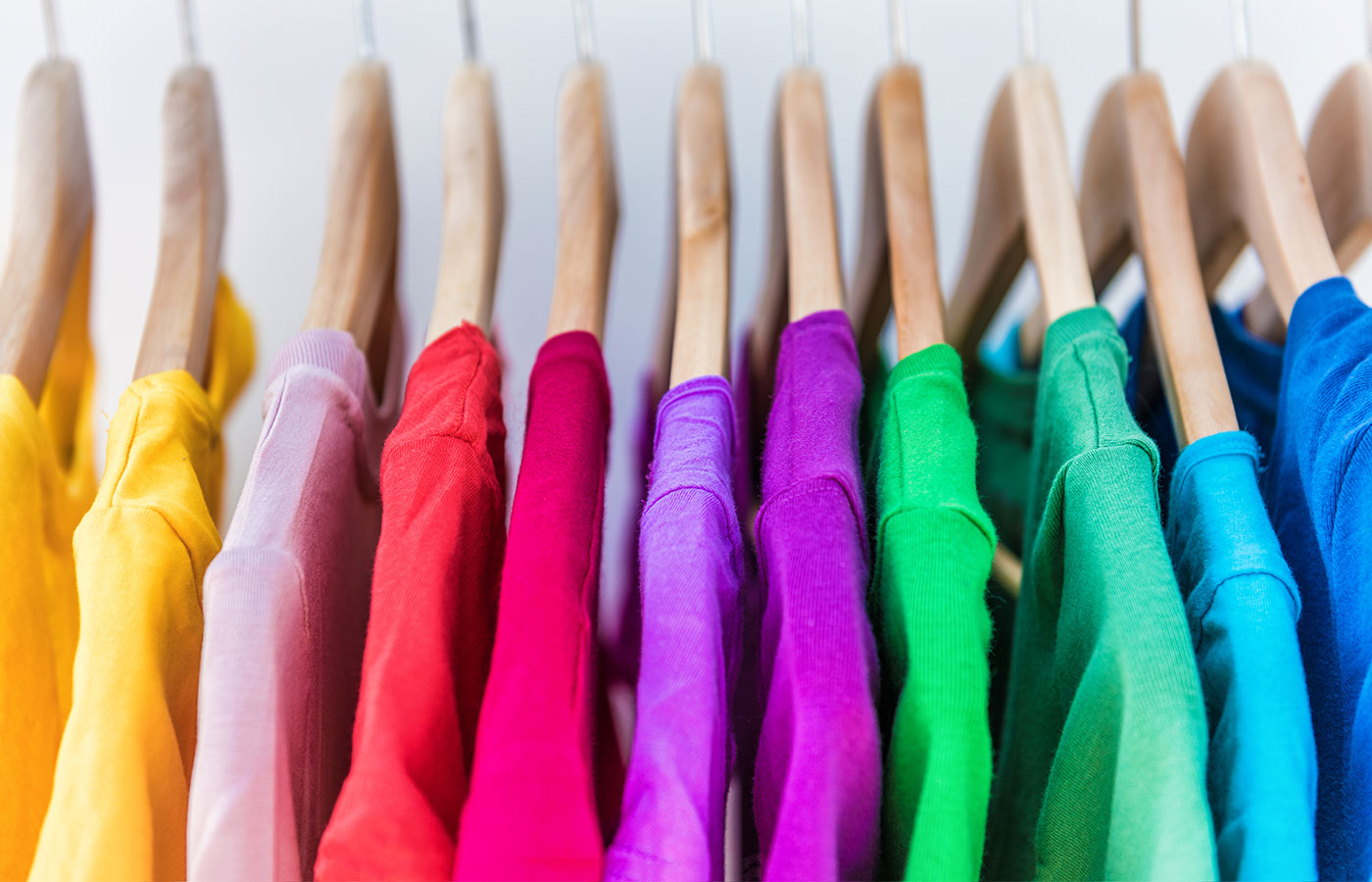Choosing Branded Clothing That Supports a Greener Wardrobe
Understanding Garments: The Value of Material Choices in Your Wardrobe
The selection of textile in garments plays an essential duty in both looks and performance. Different products supply differing levels of breathability, toughness, and comfort, straight affecting the wearer's experience. Understanding these nuances can boost one's closet considerably. Yet, numerous forget exactly how these selections can impact not just personal style, however additionally sustainability. What material choices could redefine your closet and straighten it with both style and responsibility?
The Duty of Fabric in Fashion and Performance

Common Textile Types and Their Characteristics
When choosing clothes, understanding the characteristics of common textile kinds is essential for making educated options. Cotton, a widely-used all-natural fiber, is recognized for its soft qualities, breathability, and adaptability, making it suitable for informal wear and daily garments. Bed linen, another all-natural alternative, flaunts superb moisture-wicking residential properties and an unique appearance, suitable for warm climates.Wool, usually favored for its heat and durability, differs in excellence; merino woollen is soft versus the skin, while coarser kinds are made use of for outerwear. Synthetic textiles like polyester and nylon use toughness and resistance to wrinkles, making them preferred for activewear and travel garments. Blends, which incorporate all-natural and synthetic fibers, can boost performance while keeping convenience. By identifying these material qualities, individuals can select clothing that lines up with their way of life and aesthetic preferences.
Breathability and Convenience: Selecting the Right Fabrics for Different Climates
Selecting the appropriate fabrics for numerous climates can considerably boost comfort and total wearability. Breathable materials are essential in hot climates, as they allow air circulation and moisture dissipation. Fabrics such as cotton, linen, and moisture-wicking synthetics efficiently attract sweat away from the body, maintaining the user cool and dry. On the other hand, in colder environments, thicker fabrics like woollen or fleece offer insulation while retaining breathability, guaranteeing warmth without overheating.Additionally, the choice of material weight plays an essential function; light-weight fabrics are preferable for summer, whereas heavier options are fit for winter season wear. Understanding the unique residential properties of each fabric enables people to clothe properly for varying weather condition problems. Ultimately, selecting comfortable and breathable fabrics customized to details environments can considerably enhance day-to-day convenience and enhance the total experience of using clothing.
Toughness and Treatment: Exactly How Textile Influences Long Life of Your Wardrobe
Choosing the best materials can significantly affect the sturdiness and treatment needs of a wardrobe. Fabrics such as cotton and polyester are understood for their durability and simplicity of upkeep, making them perfect for daily wear. On the other hand, delicate materials like silk and lace need even more mindful handling and specialized cleaning approaches, which can increase the moment and effort needed for care. Branded Clothing.Durability is additionally influenced by the material's weave and surface; tightly woven materials tend to withstand deterioration much better than freely woven alternatives. In addition, synthetic blends typically provide improved durability, incorporating the very best high qualities of numerous fibers.Understanding the care directions for every textile is important, as improper cleaning or drying can cause premature wear. Eventually, picking resilient materials can cause a longer-lasting wardrobe, minimizing the regularity of replacements and adding to a more sustainable style selection
The Impact of Textile on Fit and Silhouette

Lasting Textile Choices: Making Eco-Friendly Choices
The effect of textile expands past fit and silhouette to include environmental aspects, triggering a growing rate of interest in sustainable fabric options. Environment-friendly materials, such as natural cotton, hemp, and Tencel, are getting grip among consumers that prioritize sustainability in their closets. These products are commonly created with fewer chemicals and water, minimizing their eco-friendly footprint.Additionally, recycled textiles, made from post-consumer waste, supply an innovative service to the textile sector's contamination issue. Brands significantly accept transparency in their sourcing techniques, allowing customers to make educated decisions about their purchases.Choosing lasting fabrics not just sustains ethical methods yet likewise encourages the fashion business to take on more responsible manufacturing techniques. As recognition of environmental issues climbs, individuals are urged to review the long-lasting effect of their fabric selections, fostering a movement towards a more sustainable and environmentally conscious method to style.
Elevating Style: Just How Fabric Can Transform an Outfit
While numerous might concentrate on color and cut when selecting an outfit, the option of material plays a vital role in boosting style and enhancing general appearance. Different products share unique state of minds and messages; for instance, silk radiates luxury and class, while denim uses a casual, unwinded ambiance. The appearance and drape of a material can significantly change the shape, with structured materials providing a polished appearance and softer ones creating a more fluid, kicked back aesthetic.Moreover, the weight of the material influences wearability across periods. Lightweight materials like linen and cotton are excellent for summer season, while much heavier products such as woollen and velour supply warmth and beauty in cooler months. Recognizing fabric residential or commercial properties, such as breathability and stretch, also equips individuals to make enlightened choices that boost comfort without compromising style. Inevitably, the appropriate fabric can transform an attire from common to remarkable, making it an essential factor to consider in any kind of closet.
Often Asked Inquiries
How Do I Identify the Textile Web Content of My Clothes?
To determine fabric web content, one can take a look navigate to these guys at care tags, conduct shed tests for fiber recognition, or speak with textile swatches. These approaches assist separate materials, making sure educated selections for garments treatment and maintenance in day-to-day wear.
Can Material Option Affect My Mood or Confidence?
Fabric option can considerably influence Check This Out an individual's mood and self-confidence. Branded Clothing. Specific products may stimulate feelings of comfort or beauty, while others can really feel unflattering or restrictive, eventually affecting self-perception and psychological wellness throughout the day
What Fabrics Are Ideal for Delicate Skin?
For people with sensitive skin, all-natural fabrics like bed linen, cotton, and bamboo are commonly advised. These materials are breathable, hypoallergenic, and less likely to create irritability, making them ideal options for comfort and skin health.
Exactly how Do I Appropriately Laundry and Look After Different Fabrics?
To appropriately care and wash for different fabrics, one have to take into consideration each material's certain requirements, consisting of temperature settings, detergents, and drying techniques, guaranteeing long life and keeping the fabric's original top qualities for suitable use.
Exist Details Fabrics for Athletic or Performance Wear?
Sports or performance wear usually utilizes textiles such as nylon, spandex, and polyester. These materials are made for moisture-wicking, breathability, and flexibility, boosting activity and comfort during physical tasks while supplying durability and assistance. On the other hand, in colder climates, thicker materials like wool or fleece supply insulation while retaining breathability, making sure warmth without overheating.Additionally, the option of textile weight plays an important role; lightweight fabrics are more suitable for summertime, whereas heavier choices are matched for winter months wear. In contrast, delicate products like silk and lace need more mindful handling and specialized cleansing approaches, which can enhance the time and initiative needed for care.Durability is also affected by the fabric's weave and coating; tightly woven materials have a tendency to withstand wear and tear much better than loosely woven choices. In comparison, rigid fabrics can limit activity yet supply a traditional, polished look.Moreover, the thickness and texture of the fabric can affect the aesthetic assumption of body shape. The effect of material expands past fit and shape to encompass ecological variables, triggering an expanding interest in lasting textile selections. The texture and drape of a textile can considerably change the shape, with structured fabrics providing a sleek appearance and softer ones developing an extra fluid, relaxed aesthetic.Moreover, the weight of the textile affects wearability across periods.